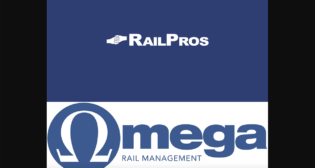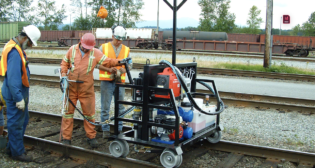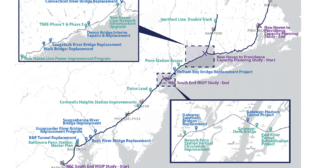
FRA amends track inspection regulations
Written by William C. Vantuono, Editor-in-ChiefThe amended regulations require performance-based inspections, “a process designed to minimize rail defects that will generally result in an increase in tests performed over a designated area of track.” Specifically, FRA said it is “promoting the safety of railroad operations by enhancing rail flaw detection processes. In particular, FRA is establishing minimum qualification requirements for rail flaw detection equipment operators, as well as revising requirements for effective rail inspection frequencies, rail flaw remedial actions, and rail inspection records. In addition, FRA is removing regulatory requirements concerning joint bar fracture reporting.”
FRA said the final rule, published in today’s Federal Register (Docket Number FRA-2011-0058, Notice No. 2), “strengthens existing Federal Track Safety Standards” by:
• “Requiring the use of performance-based rail inspection methods that focus on maintaining low rail failure rates per mile of track and generally results in more frequent testing.”
• “Providing a four-hour period to verify that certain less-serious suspected defects exist in a rail section once track owners learn that the rail contains an indication of those defects.”
• “Requiring that rail inspectors are properly qualified to operate rail flaw detection equipment and interpret test results.”
• “Establishing an annual maximum allowable rate of rail defects and rail failures between inspections for each designated inspection segment of track.”
FRA’s Federal Track Safety Standards require railroads to regularly inspect track conditions, and to also conduct separate rail inspections with hi-rail vehicles. Equipment currently in use employs ultrasonic technology to identify internal rail defects that could potentially lead to an accident. Data is collected in real-time.
“Current rail inspection standards include a maximum number of days and tonnage that can be hauled over a stretch of track between tests,” FRA said. “The new regulations establish internal rail flaw defect standards for each railroad while the technology used will continue to drive down the number of known rail defects over time.”
The final rule implements Section 403(b) of the Rail Safety Improvement Act of 2008 (RSIA). FRA has now completed 30 of the approximately 42 RSIA-mandated final rules, guidance documents, model state laws, studies, and reports. The final rule “also builds upon decades of FRA-sponsored research focused on enhancing rail integrity, and addresses recommendations by both the National Transportation Safety Board (NTSB) and U.S. Department of Transportation’s Office of Inspector General,” FRA noted.
“Our goal is to drive continuous safety improvement and further reduce the risk of broken rails and derailments,” said Federal Railroad Administrator Joseph C. Szabo. “While track-caused accidents have declined by 40% over the past decade, these new standards will better advance the use of technology and achieve the next generation of safety.”
The final rule is effective March 25, 2014. Petitions for reconsideration must be received on or before March 25, 2014. Comments in response to petitions for reconsideration must be received on or before May 9, 2014.



